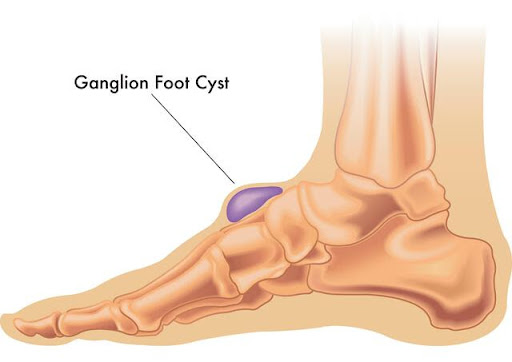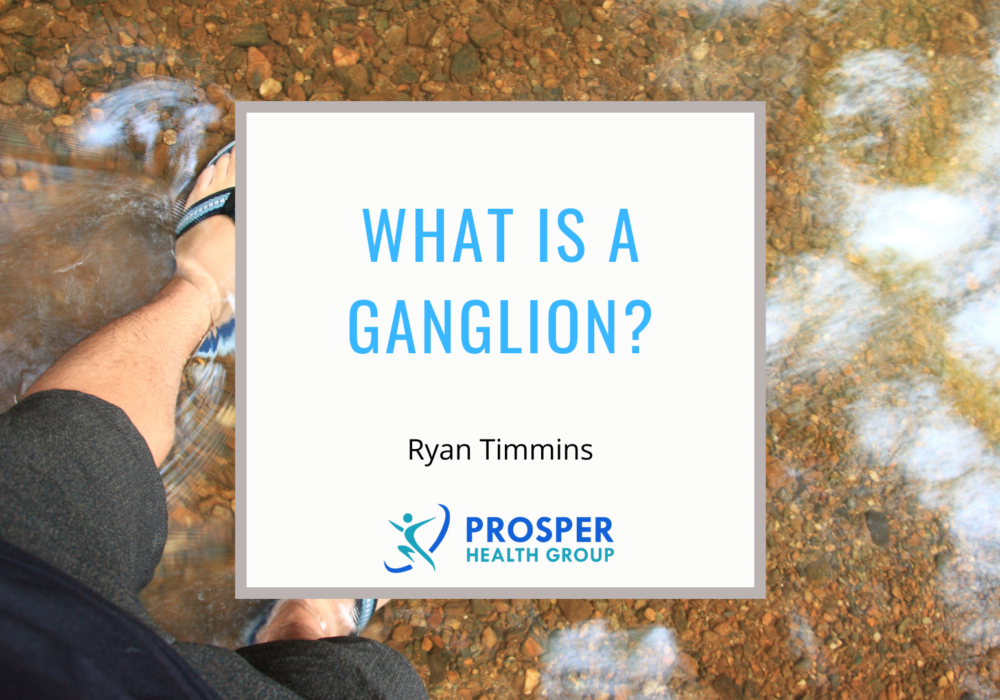What is a ganglion?
A ganglion will present as a small to medium bump/lump on the surface of the skin that can protrude considerably and is soft to touch.
Also referred to as a ganglion cyst, they typically arise from tendons or joints as these are usually areas of inflammation, stress and/or degeneration. They are commonly found around the wrist joint and tendons in the arm, however, they are equally as common at the top of the foot and at the big toe joint.
Inside the ganglion you will find a thick, sticky, clear, colourless jelly-like substance.

How do you get a ganglion?
The cause of a ganglion is not commonly agreed upon or known. The most likely theories involve trauma to the joint capsule or tendon sheath where the ganglion develops. Repetitive injury to the supporting capsular and ligamentous structures appears to stimulate fibroblasts to produce hyaluronic acid, which accumulates to produce the mucin “jelly-like” material commonly found in ganglion cysts.
Anyone can develop a ganglion at any age, however they most commonly occur between the age of 20 and 50, and women are 3 times more likely than men to develop one.
The history of a previous injury to a tendon (such as tendonitis) or the presence of arthritis in a joint has been theorised to increase the likelihood of developing a ganglion at that injured area.
How do you treat a ganglion?
Ganglion cysts do not always require treatment. Many people live with ganglions without requiring treatment. Typically treatment is sought if the ganglion is in an area that is causing pain/pressure (such as the top of the foot while in shoes), or if it is causing weakness/pain to the tendon it is overlying.
As Podiatrists, we are trained in how to aspirate ganglion cysts on the foot and leg for patients wanting them treated. This involves the injection of a local anesthetic, followed by the piercing of the ganglionic sac and aspiration of the ganglion fluid inside. This is performed in our clinic rooms and has little to no side effects or complications. You are able to go about your everyday life immediately following the procedure.
Surgical options are available when the above method proves unresponsive. With surgical treatment, a surgeon will remove the cyst and the area around it. This method of surgery is called a ganglionectomy and is extremely safe.
What to do from here?
To have your feet assessed and treated by one of our trained Podiatrists, simply call 5290 5238 or book online.
